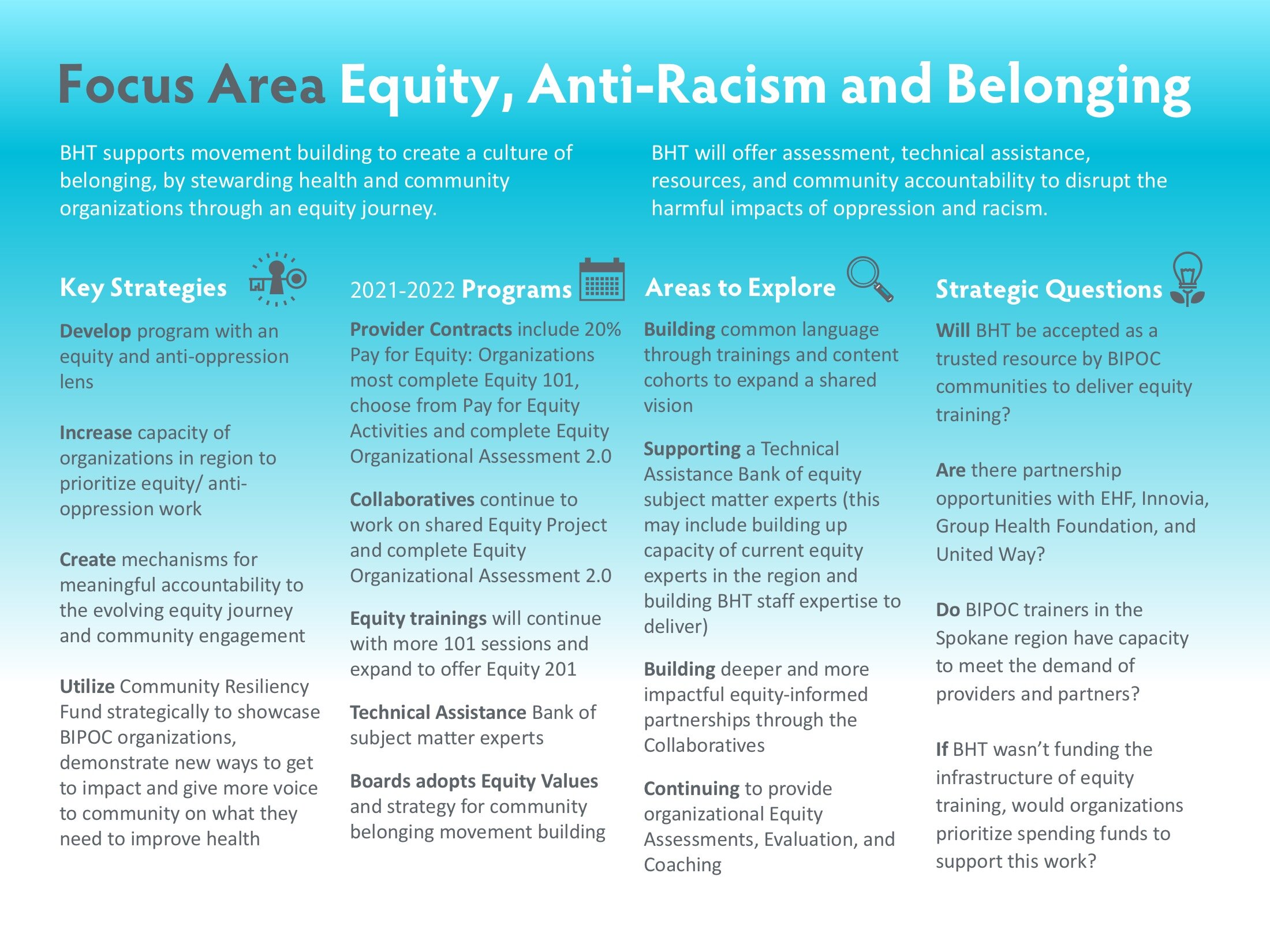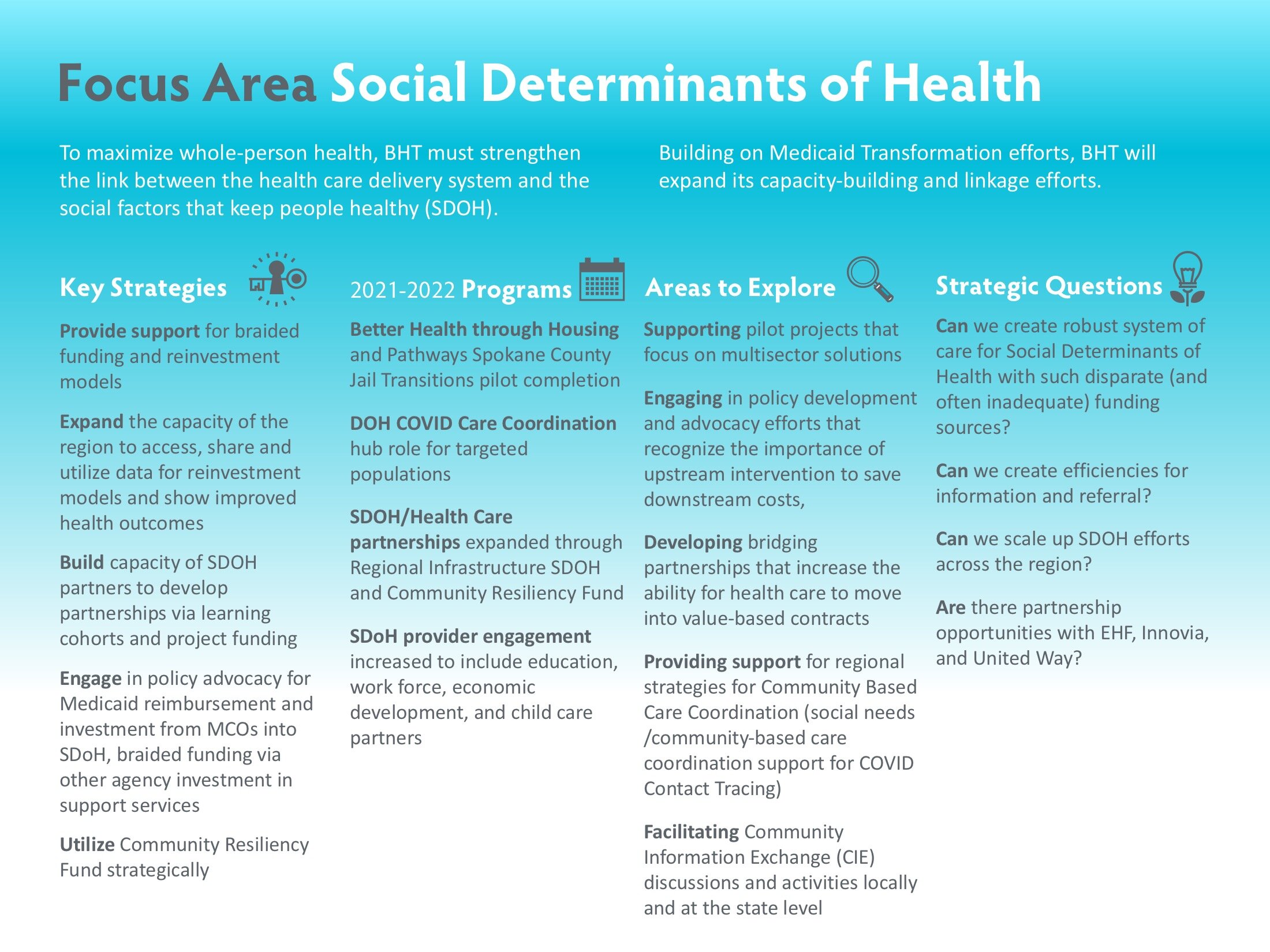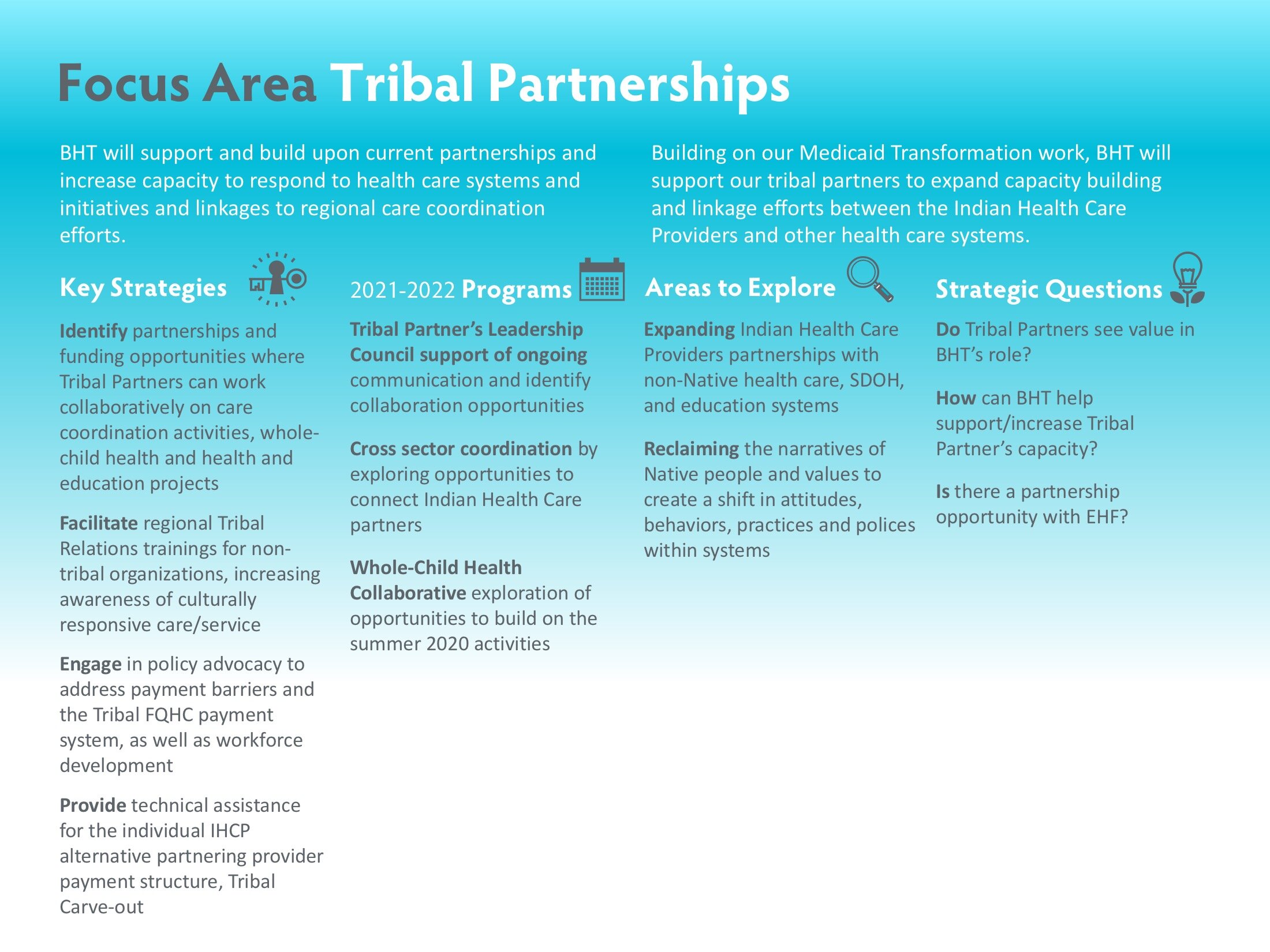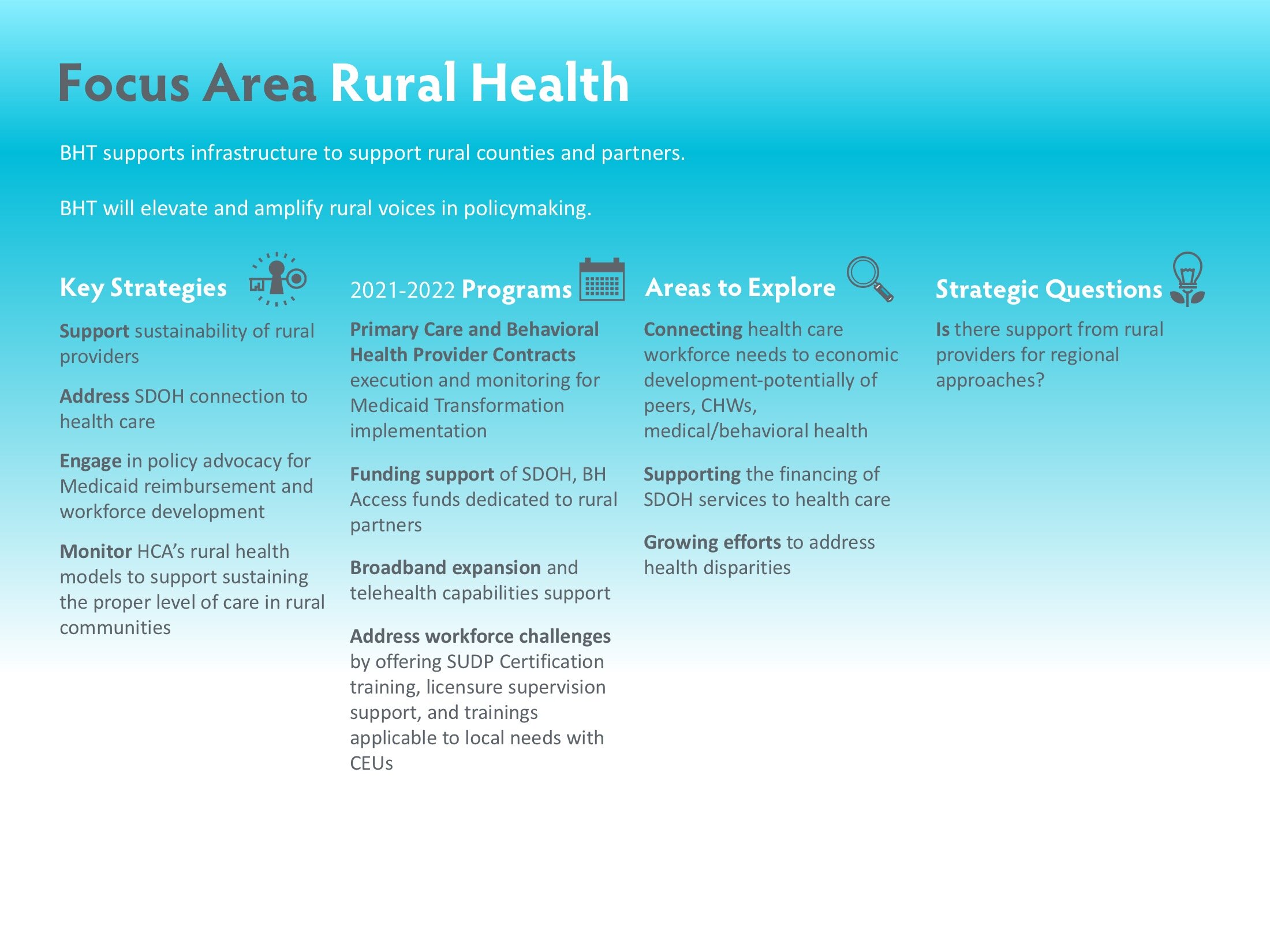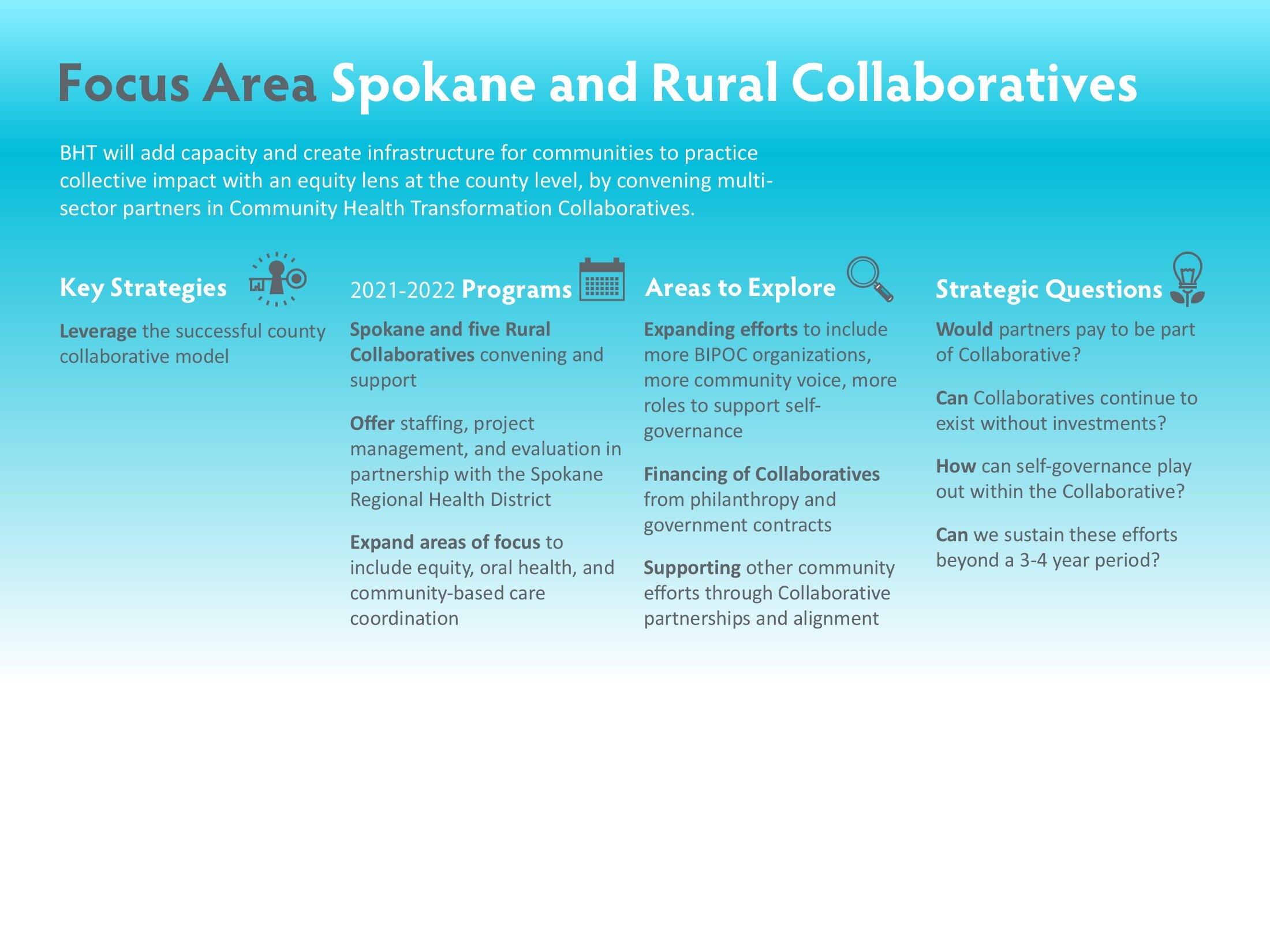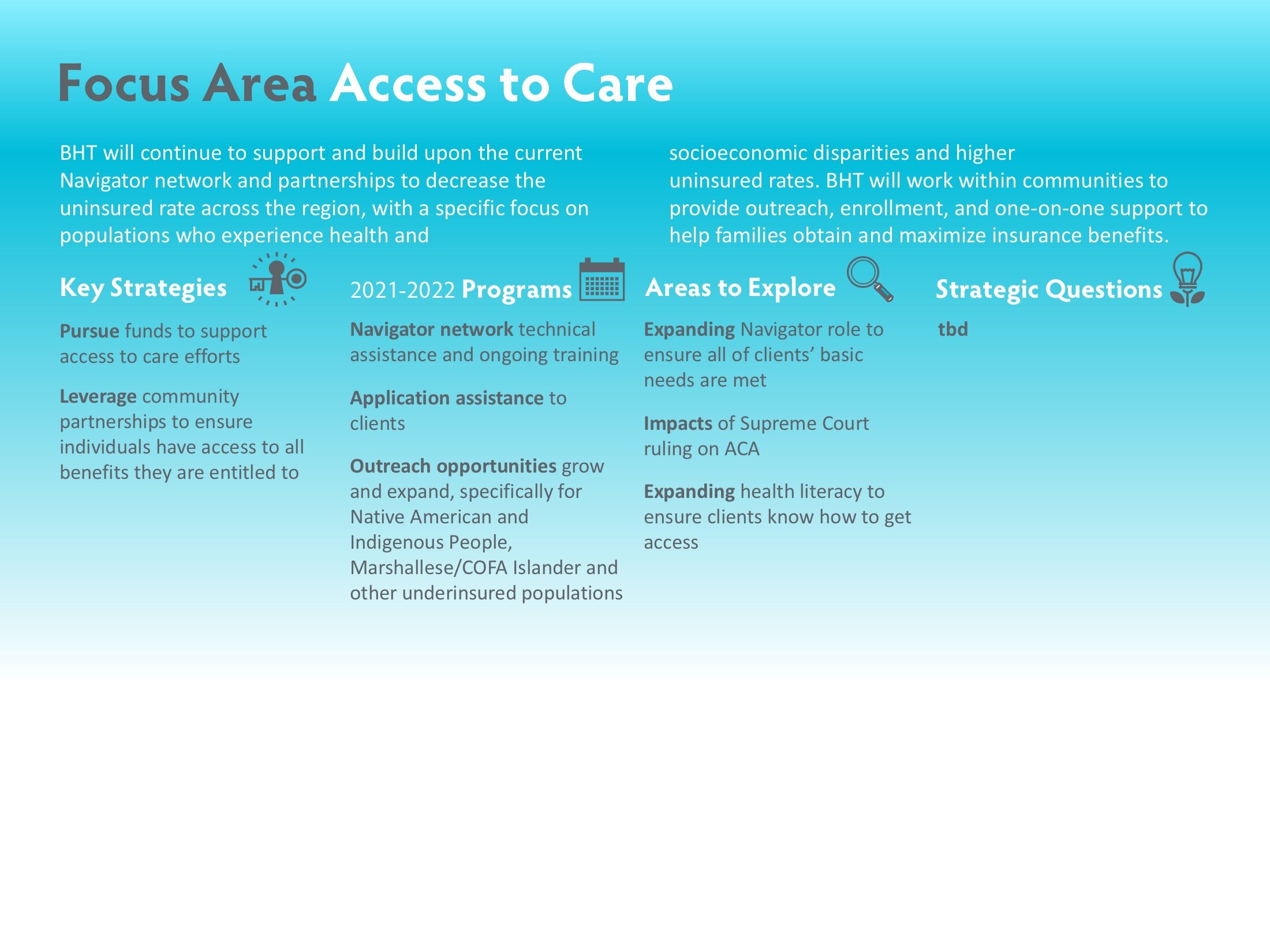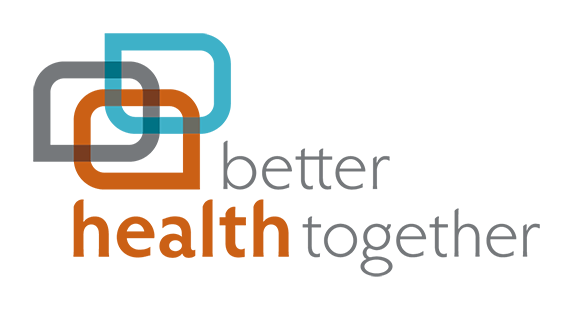Planning for Our Future: A Sustainability Framework
/Overview
Since the inception of the Medicaid Waiver, the Better Health Together (BHT) Board of Directors (Board) has paid attention to balancing the capacity needed to manage an expected $70,000,000 in Waiver funds with the need to sustain the work beyond the five-year demonstration period. We were intent on pushing funds out to our partners as early and as meaningfully as we can.
As we entered 2020, the Board agreed to a deliberate effort to plan for BHT beyond the Waiver. From May through September 2020, the Board engaged in a planning process focused on our future and financial sustainability. The process included reviewing our history, assessing our capabilities and initiatives, surveying the external environment, and gathering staff input. Board members discussed gaps in the region and identified opportunities to build on and expand current work. Finally, the Board identified areas for us to focus on going forward.
SWOT Analysis
The Board began a planning process on the organization’s future and financial sustainability in May 2020. This process began with assessing our strengths, weaknesses, opportunities, and threats (SWOT), outlined in Table 1 below.
The Board achieved a high degree of consensus on our strengths, with our role as a neutral convener, our strong relationships with a wide array of partners, and our prioritization of equity, anti-racism, and oppression. Board members view us as a strong and nimble organization, with the valuable skill of understanding the big picture while also being able to pragmatically move work forward through the mechanisms and relationships it has with its partners.
The Board identified several organizational weaknesses, including our reliance on state funding through the 1115 Waiver and that we are doing equity and anti-racism work as a predominantly white organization. Board members also expressed concern about the large size of the staff and the Board as it pertains to our future. In terms of opportunities, the nation’s racial reckoning brings a chance for us to continue and deepen our anti-racism and equity work. We are also well-positioned to move forward with additional efforts to address social determinants of health (SDoH) needs. The COVID-19 pandemic brings both opportunities and threats. There is an opportunity to leverage the crisis for health systems transformation work and community-based care coordination, as well as for us to move into public/community health efforts; however, the impact of the pandemic on partners, as well as the economy, is a serious threat going forward. Board members are also worried that the lack of understanding state lawmakers’ have about the role and value of ACHs will endanger support in a climate of state budget cuts.
Table 1. BHT SWOT Analysis
Strengths
Strong convener/coalition builder
Strong relationships with clinical and community partners, MCOs, Tribes, and elected leaders
Health Equity focus
Strong leadership and strong staff
Strong reputation or “brand”
Developed a successful framework for transformation
Big systems thinker with an ability to move work forward
Innovative, flexible, nimble, and adaptive
Strong local voice
Data / outcome-driven
Inclusive (seek to engage a wide array of partners)
Clear mission
Policy advocacy capabilities
BHT is vested in partners’ success
Have had Waiver dollars to push out to partners
Relationship to EHF
Weaknesses
Waiver is the primary source of funds
Large initiatives without future funding
Have been forced to do the work the way the HCA wanted
Doing equity work while being a predominantly white organization
Have had a Medicaid-only focus thus far
Just getting to SDoH work
Have not done enough policy/ advocacy work
Board is too large (should be 9-11 people)
Large staff
Age and youth of organization (a strength, as well as a weakness)
Opportunities
Health disparities / equity
Positioned to move forward on SDoH
COVID-19 pandemic: opportunities for contract tracing, care coordination support, immunization campaigns.
Opportunity to leverage the crisis for health systems transformation work, anti-racism & addressing SDoH needs
Public policy advocacy
Collaboratives as member-funded
BHT is a strong ACH – it can serve as a program developer and TA provider to other ACHs
The HCA has a lot riding on ACH investments, so they won’t let it fail
Threats
State and federal budget cuts/ economy
Legislators don’t understand nor support ACHs
Inability to secure funds outside Waiver/ state funds
May not be able to convince others that BHT is more than the ACH work
The HCA’s perceived lack of support, as well as the challenge of wanting to be independent of the HCA requirements which inhibit our work
Any weaknesses in other ACHs could reflect on BHT
Partners will revert to silos after Waiver funds go away
Threats to the Affordable Care Act (ACA)
Sustainability Framework
After engaging in the sustainability planning process and discussions, the Board and staff developed a strategic framework for the organization, prioritizing the following six areas of focus and the approaches we may use. It was agreed that, due to the uncertainty of the times, it would serve us better to develop a sustainability framework rather than a traditional three-year strategic plan for moving forward.
Focus Areas:
Equity, Anti-Racism, and Belonging
Social Determinants of Health
Tribal Partnerships
Rural Health
Spokane and Rural Collaboratives
Access to Care
This sustainability framework will continue to support our goals of:
Improving access to integrated, whole-person care. People in the region have access to integrated physical, behavioral, and oral health in a whole person system of care.
Optimizing the use of community resources. Strong linkages exist between the health care delivery system and community resources to address social determinants of health.
Promoting health equity for all, by all. Equity is integrated and elevated in the health care delivery system, and the health of every community is improved.
Achieving organizational excellence and accountability. BHT staff, Board, and operations maximize community investment for high performance.
This framework includes the key approaches defined in 2019 that we use for structuring our work and meeting goals:
Convening & Leadership
Outreach & Engagement
Policy Advocacy
Incentives & Investments
Leveraging Data
Technical Assistance
Demonstrating Accountability
